Article Source: Journal of Agricultural Mechanization Research;
Author: Yingying Shan, Xinmin Shan, Song Gu.
Watermelon, as a typical economic crop, has a large market demand and high quality requirements, but its seedling cultivation is difficult for melon and eggplant. The main reason is that: watermelon is a light loving crop. If there is not enough light after the watermelon seedling is broken, it will be overgrown and form high foot seedlings, which seriously affects the quality of seedlings and later growth. The watermelon from sowing to planting happens to be between December of that year and February of the next year, which is the season with the lowest temperature, the weakest light and the most serious disease. Especially in southern China, it is very common that there is no sunshine for 10 days to half a month in early spring. If there is continuous overcast and snowy weather, it will even cause a large number of dead seedlings, which will bring great harm to the farmers’ economic loss.
How to use artificial light source, e.g. light from the LED grow lightings, to apply “light fertilizer” to crops including watermelon seedlings under the condition of insufficient sunlight, so as to achieve the purpose of increasing yield, high efficiency, high quality, disease resistance and pollution-free while promoting the growth and development of crops, has been the key research direction of agricultural production scientists for many years.
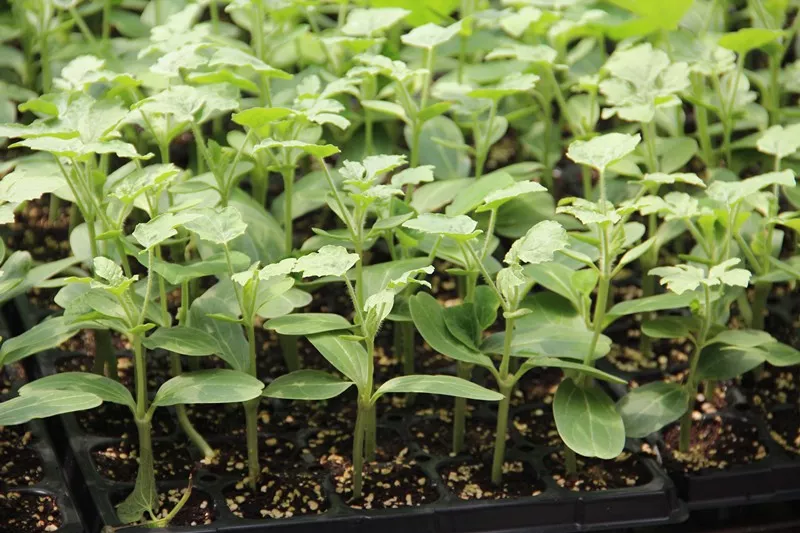
In recent years, the research further found that different ratio of red and blue light also had a significant effect on the growth of plant seedlings. For example, researcher Tang Dawei and others found that R / b = 7:3 is the best red and blue light ratio for cucumber seedling growth; researcher Gao Yi and others pointed out in their paper that R / b = 8:1 mixed light source is the most suitable supplementary light configuration for Luffa seedling growth.
Previously, some people tried to use artificial light sources such as fluorescent lamps and sodium lamps to carry out seedling experiments, but the result was not good. Since the 1990s, there have been researches on seedling cultivation using LED grow lights as supplementary light sources.
LED grow lights have the advantages of energy saving, environmental protection, safety and reliability, long service life, small size, light weight, low heat generation and good light dispersion or combination control. It can be combined according to the needs to obtain pure monochromatic light and composite spectrum, and the effective utilization rate of light energy can reach 80% – 90%. It is considered to be the best light source in cultivation.
At present, a large number of studies have been made on the cultivation of rice, cucumber and spinach with pure LED light source in China, and some progress has been made. However, for watermelon seedlings which are difficult to grow, the current technology still stays at the stage of natural light, and LED light is only used as supplementary light source.
I In view of the above problems, this paper will try to use LED light as a pure light source to study the feasibility of watermelon seedling breeding and the best luminous flux ratio to improve the quality of watermelon seedlings without relying on sunlight, in order to provide theoretical basis and data support for the light control of watermelon seedling in facilities.
A. Test process and results
1. Experimental materials and light treatment
The watermelon ZAOJIA 8424 was used in the experiment, and the seedling medium was Jinhai Jinjin 3. The test site was selected in the LED grow light nursery factory in Quzhou City and the LED grow lighting equipment was used as the test light source. The test lasted for 5 cycles. The single experiment period was 25 days from seed soaking, germination to seedling growth. The photoperiod was 8 hours. The indoor temperature was 25 ° to 28 ° in the daytime (7:00-17:00) and 15 ° to 18 ° in the evening (17:00-7:00). The ambient humidity was 60% – 80%.
Red and blue LED beads are used in LED grow lighting fixture, with red wavelength of 660nm and blue wavelength of 450nm. In the experiment, red and blue light with the luminous flux ratio of 5:1, 6:1 And 7:13 were used for comparison.
2. Measurement index and method
At the end of each cycle, 3 seedlings were randomly selected for seedling quality test. The indexes included dry and fresh weight, plant height, stem diameter, leaf number, specific leaf area and root length. Among them, plant height, stem diameter and root length can be measured by vernier caliper; leaf number and root number can be counted manually; dry and fresh weight and specific leaf area can be calculated by ruler.
3. Statistical analysis of data
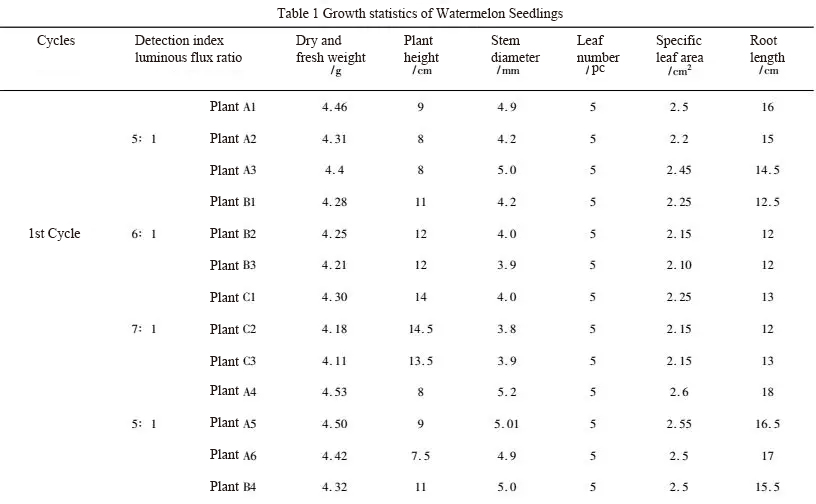
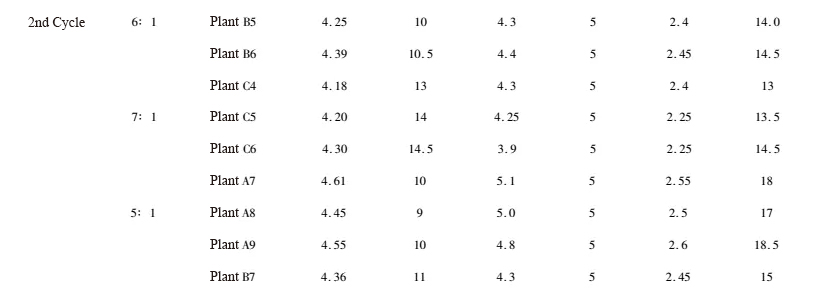
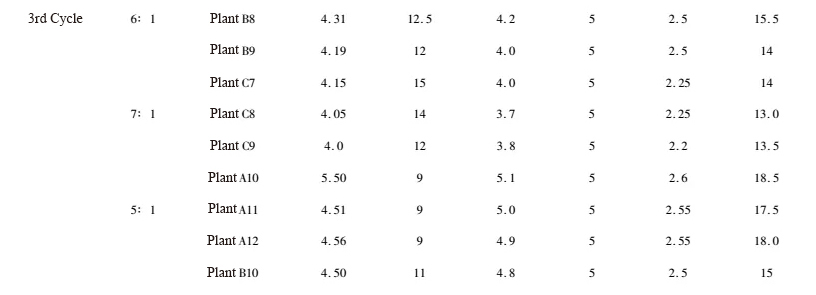
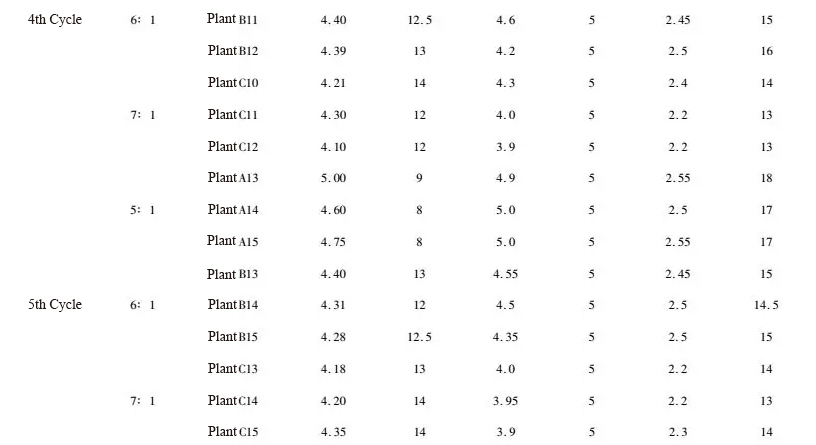
4. Results
The test results are shown in Table 1 and figures 1-5.
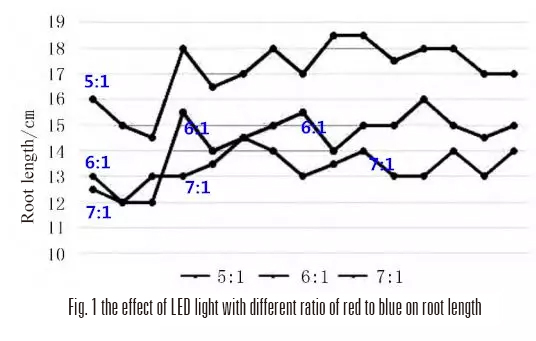
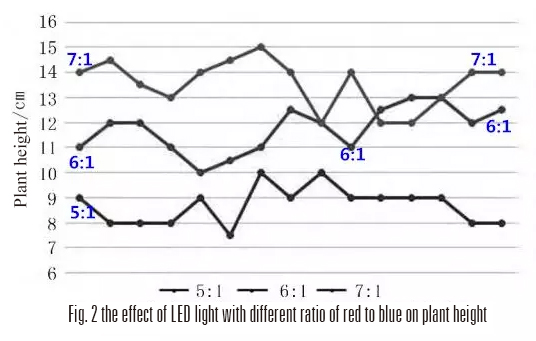
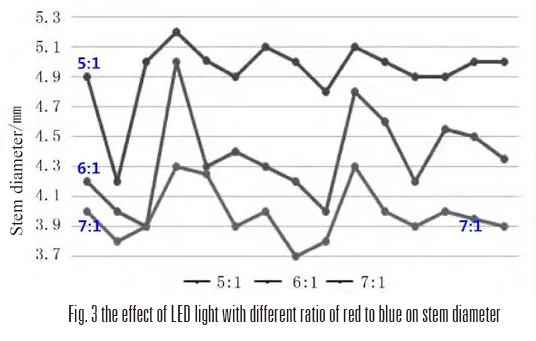
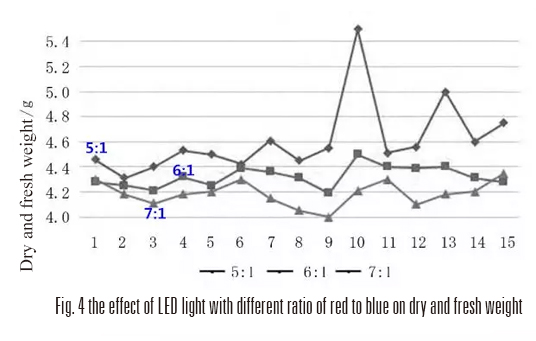
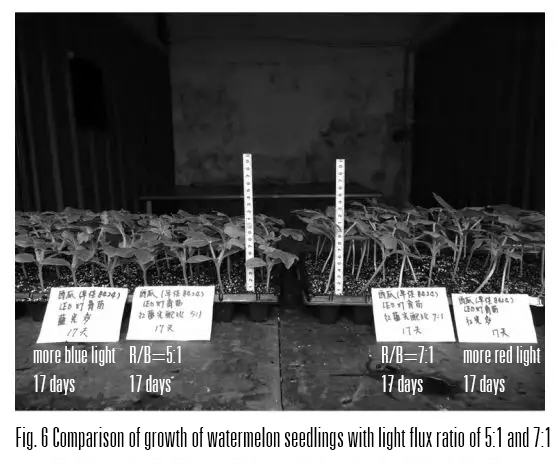
From table 1 and figure 1-5, it can be seen that with the increase of light to pass ratio, the dry fresh weight decreases, the plant height increases (there is a phenomenon of futile length), the stalk of the plant is becoming thinner and smaller, the specific leaf area is reduced, and the root length is shorter and shorter.
B. Results analysis and evaluation
1. When the light to pass ratio is 5:1, the seedling growth of watermelon is the best.
2. The low seedling irradiated by the LED grow light with high blue light ratio indicates that blue light has obvious suppression effect on plant growth, especially on plant stem, and has no obvious influence on leaf growth; red light promotes plant growth, and the plant grows faster when the ratio of red light is large, but its length is obvious, as shown in Figure 2.
3. A plant needs different ratio of red and blue light in different growth periods. For example, watermelon seedlings need more blue light in the early stage, which can effectively suppress the seedling growth; but in the later stage, it needs more red light. If the proportion of blue light keeps high, the seedling will be small and short.
4. The light intensity of watermelon seedling in early stage can not be too strong, which will affect the later growth of seedlings. The better way is to use weak light in the early stage and then use strong light later.
5. Reasonable LED grow light illumination shall be ensured. It is found that the if the light intensity is too low, the seedling growth is weak and easy to grow in vain. It should be ensured that the normal growth illumination of seedlings can not be lower than 120wml; however, the change of the growth trend of the seedlings with too high illumination is not obvious, and the energy consumption is increased, which is not conducive to the future application of the factory.
C. Results
The results showed that it was feasible to use pure LED light source to cultivate watermelon seedlings in dark room, and 5:1 luminous flux was more conducive to the growth of watermelon seedlings than 6 or 7 times. There are three key points in the application of LED technology in the industrial cultivation of watermelon seedlings
1. The ratio of red and blue light is very important. The early growth of watermelon seedlings can not be illuminated by LED grow light with too high blue light, otherwise it will affect the later growth.
2. Light intensity has an important effect on the differentiation of cells and organs of watermelon seedlings. Strong light intensity makes the seedlings grow strong; weak light intensity makes the seedlings grow in vain.
3. In the seedling stage, compared with the seedlings with light intensity lower than 120 μ mol / m2 · s, the seedlings with light intensity higher than 150 μ mol / m2 · s grew slowly when they moved to the farm land.
The growth of watermelon seedlings was the best when the ratio of red to blue was 5:1. According to the different effects of blue light and red light on plants, the best way of illumination is to appropriately increase the proportion of blue light in the early stage of seedling growth, and add more red light in the late stage of seedling growth; use weak light in the early stage, and then use strong light in the late stage.
Post time: Mar-11-2021

